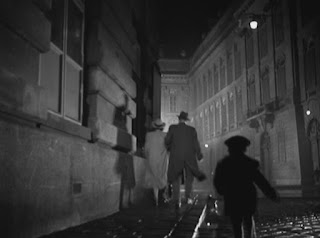Once Upon a Time in America is a powerful American gangster story from the great Sergio Leone, whose roster of films includes the spaghetti westerns featuring Clint Eastwood (the music of which is intertextually referenced in Kill Bill: vol.2). The film in question stars Robert De Niro as Jewish prohibition era bootlegger David ‘Noodles’ Aaronson, once member of a notorious gang along with his childhood friends. In the film we see Noodles’ childhood, his rise to and holding of power in Brooklyn and eventual return in order to face the demons which continue to haunt him.
In the opening scene, Noodles’ apparent girlfriend emerges from the darkness -a darkness seen frequently in the murky light-lacking back alleys of Thrillers- she moves in suspenseful silence toward the bed. She unveils the first defining image of the film, a silhouette of bullet holes, connoting both the violent gang culture of the time and the displacement of Noodles from where he is expected to be. The corrupt and/or incompetent law officials we have learned to expect then arrive, and initiate the indiscriminating violence upon the girl. The willingness to kill and lack of concern for the human life makes us assume the cops share a collective psychopathy. The next scene is ushered in with yet more violence, at levels not normally seen in our naive scope of society, yet in Thrillers this amount of violence is archetypal.






